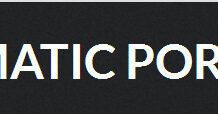The adoption of digital technologies by diplomats has had a profound impact on the working routines of ministries of foreign affairs (MFAs). Specifically, digital technologies have had a temporal and spatial effect on diplomacy. The speed with which news travels online has reduced the response time of diplomats. Those wishing to comment on world events must practice a form of real-time diplomacy in which they narrate events as they unfold on the ground. Similarly, diplomatic reporting to headquarters must now take place in near-real time as digitalization accelerates the evolution of political events. As Philip Seib has argued, the all-powerful Hosni Mubarak was ousted in just three weeks while the colour revolutions in Ukraine lasted less than a month. Digital diplomacy is thus also speed diplomacy.
From a spatial perspective, the ease with which information traverses national borders has blurred the distinction between the domestic and the foreign. Diplomatic messages aimed at foreign audiences also reach the national citizenry. Similarly, messages aimed at domestic audiences cause ripple effects among foreign populations. Diplomats must therefore now practice both public diplomacy and domestic diplomacy. Diplomacy is therefore transformed into a complex two-level game in which the domestic and the foreign constantly collide with one another.
Yet digitalization not only disrupts diplomacy. It also facilitates diplomacy. Digital tools such as social media offer diplomats the ability to traverse national borders and engage with citizens of enemy states. Such activities may lay the foundations for future diplomatic ties. Diplomats can also use digital networks to quicken their response to consular crises. Big data analysis and messaging applications can be used at the embassy and MFA level to quickly assess the situation on the ground and identify citizens in need of aid.
In order to realize the potential of digital diplomacy, MFAs throughout the world now offer their diplomats digital training. In some MFAs, such as Israel, all diplomats slated to be stationed abroad undergo digital training sessions. In other MFAs, such as Norway, Ambassadors are the focus of digital training. Finally, some MFAs offer training to local staffers at embassies who help manage social media accounts and websites. However, what is shared by many MFAs is that digital training sessions are basic and brief. Diplomats are introduced to social media platforms, they are told how each platform works and how different platforms can be used towards different ends. Yet they are not taught how to manage digital campaigns, or respond to digital outrage or conduct an analysis of digital impact. Moreover, diplomats are not taught how to use free software that can offer a more sophisticated analysis of digital activities.
There is thus a training disconnect in some MFAs as diplomats are expected to leverage digital tools without fully knowing how to do so. The question that arises is, how can the training disconnect best be overcome? How can diplomas gain the knowledge and expertise necessary to realize the potential of digital diplomacy?
One answer may lie in digital campaigns. In many MFAs, digital departments or units are tasked with planning, managing and evaluating digital campaigns. These departments thus accumulate vast knowledge and expertise in digital diplomacy. Yet this knowledge remains within these units and is not always shared with other diplomats and desks. As such, digital savviness comes to exist in a silo. But if digital departments were to collaborate with other desks on shared campaigns, their knowledge and experience would diffuse throughout an MFA.
Digital campaigns can be especially instructive as they include an analysis of audiences, mediums and impact. Digital departments begin a campaign by defining a specific and measurable goal. Next, they identify the relevant target audience. This is followed by an analysis of the medium used by the target audience and the content that is best suited for this medium. For instance, Instagram campaigns may rely heavily on images while Twitter campaigns may focus on short movie clips. Finally, digital departments measure their ability to reach target audiences and achieve pre-defined and measurable goals. Campaigns thus bring order and structure to digital activities and ensure that digital diplomacy is used to obtain concrete offline goals. Mere message dissemination is replaced with strategic thinking.
By planning and launching digital campaigns with other desks and units, digital departments can best share their knowledge and increase the ability of diplomats to leverage digital tools. This is true at the MFA level and at the embassy level. Shared digital campaigns may thus augment the basic training that diplomats receive nowadays and reduce the training disconnect.













